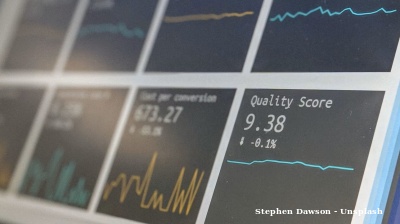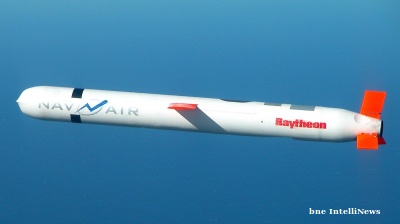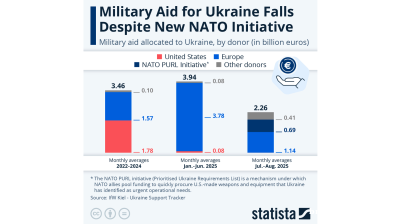Russia is the world’s biggest exporter of grain, but for the last 20 years it has been a net importer of agricultural goods.
Russia has moved from being a large importer of grain, soybeans and soybean meal during the late Soviet period to being a major grain exporter. The country has become the world’s top wheat exporter, supplying 20-23% of total world exports in 2017–2018.

Around 2000, Russian agricultural production started to rebound, both crops and livestock goods. Russian grain output began rising steadily: from 1996-2000 to 2017-2019, yearly production increased from 63mn tonnes (mmt) to 116 mmt. Wheat, barley and corn are the main grain crops, respectively comprising 66, 16 and 11% of the country’s total grain output in 2017-2019 in volume terms.
Growing grain output created sizeable surpluses for export. Russia moved from being a net grain importer of 3 mmt a year (annual average) during 1996-2000 to a net grain exporter of 47 mmt a year in 2017-2019, reports the Russian Journal of Economics (RJE).
In addition to rising production, another reason for the export growth is that the extreme contraction of the livestock sector during the 1990s reduced domestic demand for grain used as animal feed. Rather than importing grain and oilseeds to feed a high-cost livestock sector during the late Soviet period, Russia downsized the sector, replaced domestically produced livestock goods with imports, and beginning around 2000 started exporting grain.
Russian grain production (and correspondingly exports) has increased mainly because of rising yields rather than area. Russian harvested grain area fell from 58mn hectares during 1987-1991 to 40mn during 1996-2000, and then rebounded only slightly to 41mn hectares during 2017-2019.
Grain yields, on the other hand, have increased substantially, from 1.63 tonnes per hectare during 1987-1991 to 2.81 tonnes per hectare over 2017-2019.
“Drivers of the yield growth include a rebound in fertilizer use after major decline in the 1990s, the use of more advanced and technically superior inputs, some of them imported, such as high quality seeds and machinery, and a general improvement in farm management that reduces post-harvest losses and increases farm efficiency,” reports RJE.
In the last few years Russia’s grain production has soared to around 45 mmt of grain. Russia shipped to customers around the world earned the country some $25bn in 2019 – more than the value of its arms exports – the problem is that the food processing industry remains underdeveloped and Russia imports most of its fancy foods.
“Russia’s top agricultural exports are grain, fish & seafood, fats & oils,” says RJE. “In 2017-2018, Russia supplied 10-13% of total world grain exports and 20-23% of total wheat exports, which accounted for 80% of Russia’s total grain exports, in volume terms.”



Russian production of livestock products also began a major reversal around 2000. From 1996-2000 to 2017-2019, Russian yearly meat production more than doubled – from 3.6 mmt to 9.2 mmt.
The growth in chicken production has been especially high, with output rising from 0.8 mmt in 2000 to 4.7 mmt in 2019 ($A PS&D). Pork output has also risen substantially, though not beef. Expanding Russian meat production has displaced imports, which after 2006-2010 began to decline, reports RJE.
“Farm-level changes and improvements have also helped drive the revival of the livestock sector. In 2000, the small household plots – typically only half a hectare in size – maintained by the workers on the large former state and collective farms inherited from the Soviet period, and in the 1990s officially reorganized as corporate farms, accounted for about half of Russian meat production. Since then, however, large modern livestock-producing enterprises have arisen to dominate the production of chicken and pork. Beef production, however, remains largely unmodernized, with most output coming from the culling of dairy cows,” says RJE.
Russia was never a big consumer of beef, and in the Soviet era most of the beef on the market was simply from dairy cows that had reached the end of their productive life. That has started to change now with the appearance of a few commercial firms that have been set up to develop beef herds such as Miratorg and Prime Beef.
The livestock sector has benefited from not only input productivity growth but also favourable state policy. In the 2000s, the Russian government took action to reverse the extreme decline of the livestock sector during the 1990s. In 2005, the federal government identified agriculture as a national priority area that would receive increased funding (along with health, education and housing). From 2005 to 2010, total state support to agriculture rose by 135% in real (inflation-adjusted) terms.
In 2003, the state also established a restrictive regime of meat import quotas, which have yet to be abolished. The government also began extensively to impose health and sanitary restrictions on imports of meat, a policy that did not diminish much after Russia joined the World Trade Organization in 2012.
Food processing profits
The issue was highlighted after the Kremlin banned the import of EU agricultural goods in a tit-for-tat retaliation for EU sanctions imposed on Russia following the annexation of the Crimea in 2014. Expensive imported cheese disappeared from shelves overnight and Russian companies had nothing to replace it with. After a mad scramble and a few years later, Russia now has a domestic cheese industry, and there is even the famous “Siberian camembert” but the domestic food processing industry remains underdeveloped.
The Russian sanctions and now yet another ruble devaluation have been a boon for the agricultural sector, insomuch as they push imports of agri-goods down further, which supports the development of the domestic industry.
“Since 2000, Russia has been a bigger agricultural importer than exporter, and as such has run agricultural trade deficits. Yet, the drop in imports in 2014-2016, along with the continued growth in exports, has narrowed the deficit considerably,” the RJE said in a paper.
In 2013, about 40% of the food consumed within Russia was imported in value terms. The import share for meat was around 25%, and almost 70% for fruit. And Russia produces almost no tomatoes of its own; the bulk of these are imported from Turkey.
2014 was a double whammy for food imports. In addition to the tit-for-tat sanctions on agri-good imports, the sharp devaluation of the ruble following an oil price shock at the end of that year almost doubled the price of imported foodstuffs, leading to a rapid fall in consumption.
“The crisis-induced drop in food consumption and rise in production resulted in a major fall in Russian agricultural and food imports, which from 2013 to 2015-2016 declined in dollar terms by about a third, and then rose only marginally in 2017-2018,” says RJE. “Compared to 2011-2013, Russian meat imports over 2014-2016 were down by 19%, dropping from 2.5 to 1.3 mmt.”
The sanctions and falling ruble have changed the dynamics of the food business. The former is explicit protectionism, while the latter is de facto protectionism, which together have combined to make some space for domestic producers to build up a food business. Previously the problem for Russian entrepreneurs was that the cost of investing in a cheese factory was so high that they could not compete with the cheaper French camembert on price or quality. Why would a Russian consumer pay more for Russian camembert that tastes less good when they can buy the real thing for less? The same goes for a wide variety of other delicacies.
“In 2013 Russia’s main agricultural imports were livestock products (such as meat, dairy products), fruit & nuts, processed foods, beverages,” said the RJE. “By 2018 imports of these goods had fallen significantly, though they remain the dominant agricultural imports.”
The domestic market development has accelerated in recent years, although the process is far from being over. In the meantime Russia still needs to finish off building up the basic industry that provides the raw materials for food processing. While Russia has become self-sufficient in both poultry and pork production, it still lags a long way behind in meat production, to name just one obvious sub-sector.
Features

BEYOND THE BOSPORUS: Investigators feel collar of former Turkish central bank deputy governor
Regime gangs continue to hustle for gains. Some Erdoganist businessmen among the losers.

Journalist beaten to death in Istanbul as security conditions in Turkey rapidly deteriorate
Publisher, meanwhile, is shot in leg. Reporters regularly experience violence, judicial harassment and media lynching.

Agentic AI becomes South Korea’s next big tech battleground
As countries race to define their roles in the AI era, South Korea's tech giants are now embracing “agentic AI”, a next-generation form of AI that acts autonomously to complete goals, not just respond to commands.

Iran's capital Tehran showcases new "Virgin Mary" Metro station
Tehran's new Maryam metro station honours Virgin Mary with architecture blending Armenian and Iranian design elements in new push by Islamic Republic




